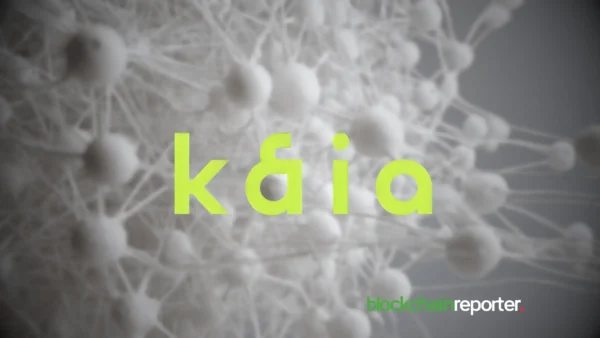
- 1. What is Helium (HNT)?
- 2. How Does Helium Work?
- 3. Who Are the Founders of HNT Crypto?
- 4. What Makes Helium Unique?
- 5. What Gives HNT Crypto Value?
- 6. What is the Circulation Supply of HNT Crypto?
- 7. How is the Helium Network Secured?
- 8. How to Use HNT Crypto?
- 9. How to Choose a Helium Wallet?
- 10. What is HNT Crypto Mining?
- 11. Conclusion
- What is Helium (HNT)?
- How Does Helium Work?
- Who Are the Founders of HNT Crypto?
- What Makes Helium Unique?
- What Gives HNT Crypto Value?
- What is the Circulation Supply of HNT Crypto?
- How is the Helium Network Secured?
- How to Use HNT Crypto?
- How to Choose a Helium Wallet?
- What is HNT Crypto Mining?
- Conclusion
In the dynamic world of blockchain and cryptocurrencies, the emergence of innovative projects continually shapes the digital landscape. One such project that has garnered attention for its groundbreaking approach is HNT crypto, powered by the Helium network. As we embark on this exploration, our aim is to demystify the complexities surrounding the Helium network and its token economy, offering a comprehensive insight into the underlying technologies and the broader implications for the crypto ecosystem.
Whether you’re an avid follower of blockchain developments or someone seeking to enhance your understanding of the crypto space, join us as we navigate through the multifaceted world of HNT crypto. Together, we’ll uncover the potential implications, challenges, and opportunities that the Helium network brings to the forefront of technological innovation.
What is Helium (HNT)?

Helium is a blockchain-driven network linking Internet of Things (IoT) devices. The technology facilitates communication among these devices, with data transmission occurring through network nodes. Individuals operating nodes engage in mining activities and receive rewards in Helium’s native cryptocurrency token, HNT crypto.
Within the Helium system, these nodes are referred to as Hotspots. Hotspots play a crucial role by offering public network coverage, utilizing the LoRaWAN technology. LoRaWAN, a media access control layer protocol, integrates a cloud component that platforms such as Helium can interface with for connectivity.
Helium stands as one of the largest LoRaWAN networks, boasting more than 25,000 Hotspots functioning as network nodes. These Hotspots harness the capabilities of both LoRaWAN and a blockchain-based mining device. Helium, nicknamed “The People’s Network,” strives to establish an effective and seamless Internet of Things (IoT) for the future, addressing prevalent issues and shortcomings.
Privacy emerges as a significant challenge in the IoT sector, especially with mainstream hubs like Google or Amazon. Through decentralization and the incorporation of blockchain technology, Helium aims to eliminate privacy concerns in connecting devices to the Internet of Things.
How Does Helium Work?
Helium strives to establish a trustworthy, decentralized, and worldwide network for IoT devices, leveraging the community of HNT crypto holders. The network comprises nodes, specifically Hotspots operated by node operators who also hold HNT coins. Users are incentivized for their active role in the network by hosting Hotspots and managing nodes.
While WiFi already accommodates IoT devices, the challenge arises in supporting a diverse range of devices, leading to privacy concerns. Helium addresses this by employing a decentralized architecture and consensus mechanism, providing the network with 200 times greater coverage compared to IoT connections through WiFi.
The network operates on a consensus mechanism called Proof of Coverage (PoC), which plays a dual role in rewarding HNT crypto holders and node operators. To set up Hotspots, users must acquire a mining device from the Helium website. Mining devices generate radio frequencies upon connecting to the network, and the Proof of Coverage mechanism verifies the locations of these Hotspots.
The HNT crypto functions as the means of exchange between two main entities within the Helium blockchain ecosystem: network operators and hotspot hosts, and enterprises and developers utilizing the Helium network. Crucial to the network’s functionality are three roles that participants can assume: Challenger, Transmitter, and Witness. The rewards distributed within the system are contingent upon the specific role played within the Hotspot network.
Who Are the Founders of HNT Crypto?
Established in 2013, Helium emerged just a few years after the introduction of Bitcoin (BTC), the original cryptocurrency. Launched under the company Helium, Inc., it positioned itself as the world’s first global peer-to-peer wireless network, capable of connecting diverse devices and forming a globally accessible Internet of Things.
Co-founded by Amir Haleem, Sean Carey, and Shawn Fanning, Helium secured over $53 million across four funding rounds from 2015 to 2019. The network officially went live in 2019, aiming to address prevalent issues within the IoT sector, particularly focusing on privacy concerns.
Haleem brings a dynamic background in eSports and game development, while Fanning is renowned for creating Napster, a pioneering music-sharing service and one of the early mainstream peer-to-peer (P2P) internet platforms in the late 1990s. Before joining Helium, Carey held various development positions, including at Where, an advertising optimization firm that was later acquired by PayPal.
The current team at Helium is comprised of individuals with expertise in radio and hardware, manufacturing, distributed systems, as well as peer-to-peer and blockchain technologies, according to the company. In essence, the HNT crypto is supported by a dedicated team of experts and proficient individuals, striving diligently for the ongoing advancement of the project.
What Makes Helium Unique?
Helium stands out among blockchain projects dedicated to the Internet of Things, alongside IOTA (MIOTA), which utilizes “blockless” technology and the Tangle network for IoT device connectivity. What sets Helium apart in its mission to enhance the Internet of Things is the distinctive Proof of Coverage (PoC) mechanism—a unique system tailored specifically for the Helium network.
The consensus mechanism relies on the HoneyBadger Byzantine Fault Tolerance protocol, enabling network nodes to achieve consensus despite varying connection rates. In addition to utilizing the native HNT crypto, Helium incorporates another non-exchangeable token called Data Credits, which users can utilize to cover transaction fees.
What Gives HNT Crypto Value?
Helium’s value is gauged based on its utility, technical capabilities, project relevance, and technology. The inherent value of Helium is predominantly assessed in terms of its utility and technology. Nonetheless, the intrinsic value and market price of the HNT crypto frequently diverge, largely influenced by the volatility inherent in the cryptocurrency market.
The market value of Helium is susceptible to significant fluctuations, influenced by a myriad of factors. The HNT crypto price is also exposed to market volatility, occasionally experiencing unpredictable price trend reversals. Consequently, the real-world value of the project often diverges from the market price of the HNT coin.
What is the Circulation Supply of HNT Crypto?
At present, 143,934,821 HNT tokens are in circulation out of the total 223,000,000 HNT. Helium maintains a capped maximum supply, and none of the HNT cryptocurrency was pre-mined. While new HNT is mined to incentivize Hotspots, this is counterbalanced by the burning of HNT to create Data Credits in a Burn-and-Mint Equilibrium token model.
The inflation rate gradually decreases over time, ensuring that the overall supply never surpasses 223 million. Multiplying the quantity of Helium (HNT) coins by the prevailing Helium market price results in the market cap. The market cap not only establishes the HNT crypto’s position relative to other cryptocurrencies but also dictates its market share and dominance within the market.
How is the Helium Network Secured?
Security for the Helium network is ensured through the utilization of the Proof of Coverage protocol, which places reliance on network participants engaging in mining activities to maintain network stability. This protocol, an evolved version of Proof of Work, necessitates miners to ensure the network’s overall security.
Designed with the aim of enabling connections even with low power, the protocol supports mining through a straightforward device available for purchase from Helium, requiring only 5W power. This approach is instrumental in achieving efficiency for Helium and the HNT crypto and facilitating seamless connections among devices within the Internet of Things network.
How to Use HNT Crypto?
Helium simplifies the connection of Internet of Things devices by leveraging low-power efficiency. It not only facilitates mining of the HNT crypto but also allows for staking, providing users with profit opportunities based on their involvement in the network. For those interested in becoming Hotspot node providers on the Helium network, the process involves acquiring specialized mining devices from the official Helium website.
Users earn rewards in HNT based on their active participation. These rewards, in HNT crypto, can be traded on the cryptocurrency market and converted into non-exchangeable Data Credits. Helium establishes a distinctive infrastructure, fostering an entirely new wireless economy driven by decentralization, earning it the moniker “The People’s Network.”
How to Choose a Helium Wallet?
The Helium development team suggests using the Helium App, a digital wallet designed for the HNT crypto, compatible with both Android and iOS operating systems. This application facilitates pairing and Hotspot setups. Alternatively, the Command Line Interface Wallet offers a secure storage solution for HNT coins but is more suitable for users with technical expertise. Beginners are advised to opt for the user-friendly Helium App.
Numerous alternatives are available for storing your HNT crypto, and the choice of wallet often hinges on your specific needs and storage requirements. Hardware wallets, such as Ledger or Trezor, offer a highly secure option with offline storage and backup capabilities. However, these wallets may demand more technical proficiency and come with a higher cost. Consequently, they might be better suited for storing substantial amounts of HNT tokens and are generally recommended for users with more experience in handling cryptocurrencies.
Software wallets present an alternative, being both free and user-friendly. These wallets can be downloaded as smartphone or desktop applications and come in custodial or non-custodial variants. Custodial wallets involve the service provider managing and backing up private keys on behalf of the user. In contrast, non-custodial wallets utilize secure elements on the user’s device to store private keys. Although convenient, they are considered less secure than hardware wallets and may be more appropriate for smaller amounts of HNT crypto or users with less experience.
Online wallets, or web wallets, offer a free and user-friendly option that can be accessed from various devices through a web browser. However, being hot wallets, they are generally considered less secure compared to hardware or software alternatives. Given that you entrust the platform with managing your HNT coins, it is crucial to choose a reputable service with a proven track record in security and custody. Consequently, online wallets are best suited for holding smaller amounts of cryptocurrencies or for individuals engaging in more frequent trades.
What is HNT Crypto Mining?
Helium diverges from the conventional Proof of Work mechanism and instead relies on miners to stabilize and secure the network. Employing an advanced form of Proof of Work based on BFT, Helium mandates miners to validate wireless coverage generated by the Hotspots (nodes).
While Helium incorporates mining, its approach differs from traditional platforms like Bitcoin which heavily depend on miners. HNT crypto’s mining system allows independent groups of miners in close proximity to work more efficiently. Nevertheless, mining devices still need to be at least 300 meters apart to facilitate the mining process.
Conclusion
Our journey through the intricacies of HNT crypto and the Helium network has unveiled a pioneering approach to revolutionizing the Internet of Things (IoT) landscape. Helium’s unique blend of blockchain technology, decentralized consensus mechanisms, and innovative Proof of Coverage protocol positions it as a frontrunner in addressing the challenges and shortcomings within the IoT sector.
The founders’ vision, combined with a dedicated team of experts, has propelled Helium to create “The People’s Network,” offering a reliable and efficient solution for connecting IoT devices. The distinctive Proof of Coverage mechanism, coupled with the use of HNT crypto as a means of exchange, adds a layer of security and utility to the network.
As we explore the value dynamics, circulation supply, and security features of HNT, it becomes evident that Helium is not only pioneering technological advancements but also contributing to the broader conversation around decentralized wireless economies. Whether you are a seasoned blockchain enthusiast or a newcomer, Helium’s commitment to decentralization, privacy, and efficient IoT connectivity opens up a realm of possibilities.









